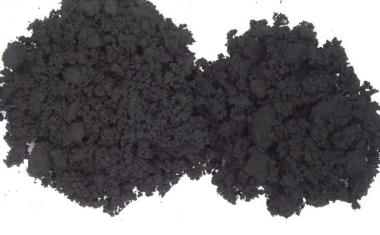Countering Commoditization


From Unique To Common - In the business world, commoditization is defined as the process by which goods that are initially distinguishable in terms of attributes (uniqueness or brand) become simple, undifferentiated and easily available. Commoditization is usually accompanied by prices changing from differentiated and relatively high to undifferentiated and relatively low as the number of competitors increases.
The chemical industry is a relatively mature one, with many big products already on the market for several decades. Commoditization, therefore, is highly relevant for the industry and is the reason behind many activities of key industry players. On one hand, commoditization has pushed many chemical companies toward decreasing their portfolio's share of basic chemicals while increasing the share of specialty chemicals. On the other hand, commoditization exerts constant pressure on specialty chemicals companies. How can they protect their products from becoming commodities? Or is the process unavoidable and only countered by constant innovation and the creation of new products?
Know Your Position
The current overall product range of the chemical industry is best regarded as a continuum between pure commodity chemicals and pure specialties. However, successfully operating in the market for a specific chemical requires a good understanding of the position of this chemical in the continuum. For the key to success in commodities - spending as little as possible to produce a standardized product - is very different from that in specialties - spending as much as can be justified by the specific features differentiating the product.
For a chemical company, it is mandatory to know the market life cycle of its products: Which products are commodities; which are specialties? Typical indicators for commodities are an increase in the number of competitors, excess capacity and lower demand, decreasing need for technical service, emergence of low-cost competitors and decreasing effectiveness of the sales force.
For most chemical businesses today, the situation is not as clear as that. They operate somewhere between the two extremes, competing in a zone where commoditization prevents players from exclusively focusing on specialties, and encourages commodity-oriented players to capture additional value. In this no man's land, price- and performance-based competition coexist uneasily.
Survival In Commodity Chemicals
Pure commodity chemicals have only one market price. As a consequence, commodity players' margins depend directly on their cost positions. Players without a viable business have costs that are higher than the market price; the costs of marginal players are close to market prices. Therefore, improving the situation requires improving the cost position, for which options such as outsourcing, reduction of production and raw materials costs, and lower-cost distribution channels (e.g., web-based sales of low-margin standard products) can be considered. In some cases, it may be possible to successfully brand a price-sensitive commodity, particularly if end applications with particular focus on quality or specific properties can be identified. Customers in these application-oriented segments may be willing to pay a price premium and may in the long run also be offered specialties with tailor-made attributes. The key is to be market-oriented rather than product-focused. For steel, Tata has successfully utilized this approach, establishing a very strong brand name in steel and also engaging in co-branding with some of its major customers, particularly in automotive.
Doing Well In Specialties
At the other end of the continuum, specialty businesses compete on the basis of differentiation. Successful specialty players' margins increase the more they invest, whether in manufacturing differentiated high-value products, in research and development leading to new offerings, or in marketing and sales to convince customers that their premium pricing is justified. In contrast, nonviable and marginal players do not spend enough - or wisely enough - to justify the premium prices they seek. Attention, however, has to be paid to SKU management.
In any case, the threat of commoditization is always there and needs to be countered by value-adding properties such as superior product performance and properties, high product and service quality, speed of service and delivery, and other unique added values. In particular, consider the following:
Focus on new products. While this has long been regarded as the most promising way to escape commoditization, it is increasingly difficult to create breakthrough products in an industry as mature as the chemical one. The success rate - at least of internal R&D - is reported to be decreasing unless the work focuses on purely incremental innovation (which obviously has a lower potential to create true new specialties). In addition, customers seem to get pickier about untried chemicals as they often are already fairly happy with existing solutions, particularly in markets with a strong "good enough" segment, such as China. On the other hand, there is also the danger of a vicious commoditization circle caused by insufficient spending on innovation. Another issue is to find the right balance between business unit-driven research (which tends to result in new products for existing customers) and corporate-driven research (which may also lead to new products for new customers). For example, Evonik stresses the difference between the two types with separate organizations (individual BUs and Creavis).
Product customization. Customized products are a way to deepen customer relationships and do buy some time for breakthrough innovations. However, they also add to internal complexity and cost, particularly with regard to the supply chain. Customized products are particularly relevant for customer industries with a small number of dominant customers with high entry barriers, such as automotive OEMs, which may require the certification of individual grades of polymer blends supplied by polymer producers and compounders.
Specific measures for products in the transition from specialties to commodities. Measures that focus on helping the customer to save money (specifically, operating cost or capital costs) are particularly suitable as the shift from specialties to commodities is very frequently accompanied by increasing cost pressure on the part of the product users. For example, Stepan offers vendor-managed inventory for surfactants customers in cosmetics.
Service improvement. Align the service level with the amount the customer is willing to pay. This level may be different for different customers and for different parts of the service, e.g., customer service, after-sales service, technical support. Also pay attention to other service aspects accompanying the core product, such as delivery times, shipment quantities and payment terms. In some areas, the combination of products and services may lead to entirely new offerings, an example being the life-cycle management offered by sulphuric acid producers such as Rhodia (now part of Solvay).
Bundling. Offer other products or after-sales service at a discount. This may lead to a decrease in relative margin but will also increase the absolute one. For example, in polyurethanes several companies, including BASF and Bayer, have strengthened their systems business via the establishment of additional systems houses, which by definition focus on offering bundled PU systems.
Customer portfolio. Decide which customers you do not want to serve. Be ready not to supply them any longer if they refuse to renegotiate prices. You will lose market share but improve profitability. Some companies, such as Dow, do not mind leaving a large share - up to 50% - of their business to distributors, thus refusing to serve small customers directly and reducing internal complexity.
Sales-force compensation. Compensate your sales force based on profit, not on sales revenues. A volume-based sales force will sign up any customer regardless of profitability. That may be acceptable early in the product life cycle but not in a more mature phase. Thus it is particularly relevant in those markets that only now reach some kind of maturity, e.g., China. Here, many multinational companies have already shifted from incentives based on sales volumes to one on profit, though this necessitates the establishment of additional tools and the broader sharing of profitability knowledge with the sales staff.
Cost optimization. Trim costs and acquire competitors (with profitable customers) to extract maximum scale economies in procurement, manufacturing and distribution. The establishment of the low-cost, online-only Xiameter brand of Dow Corning is an example of such a cost optimization.
Pricing. If you are not a low-cost producer, do not base your prices on material volume or another easily comparable parameter but rather on the value created by your products. For example, a German specialty chemicals producer developed a polymer additive for drying nets used in paper production. This product doubled the lifetime of the nets. Pricing was then based on this fact, leading to a price increase of 30% compared with competitive products and to additional profit for the producer.
Cooperation with customers. Enhance the customer relationship both on a vertical and horizontal level by linking problem-solving innovation, marketing and operations. For example, Ajinomoto, a leading manufacturer of amino acids, has partnered with Toray, a leading manufacturer of nylon, for the creation of bio-based nylon products from Ajinomoto's raw materials.
Volume expansion. Examine the potential for volume expansion, e.g., via regional expansion or scale-driven mergers. For example, BASF has considerably expanded its portfolio and presence in specialty chemicals via a number of acquisitions, including Cognis and Ciba.
Portfolio diversification. Does the customer need other products in conjunction with products you offer? Consider offering them. Decide whether to make or buy these other products. In the latter case, consider taking up a dealership or regional marketing partnership with the original manufacturer. Oemeta has extended its portfolio in metal working fluids to include a broad variety of categories from coolants and cutting oils to lubricants, hydraulic fluids, cleaners and additives.
One-stop shopping. Are chemicals only a minor production input for the customer? In this case you can offer to purchase all chemicals for the customer, thus helping the customer to reduce complexity and potentially cost. If you can do this for several customers, you can buy the chemicals in bulk, achieving overall lower purchasing prices. Such chemical management service is already offered in some industries, e.g., in aerospace (e.g., Haas offers chemical management of aerospace chemicals). And of course, leading chemical distribution companies such as Brenntag and Univar regard their offer of one-stop shopping as one of their key strengths.
Branding. Devise a branding strategy that focuses on the unique value of your offering: product, service, supply and logistics benefits, and added value beyond customer's expectation and needs. Explain to your customers why your prices are higher and show them how you deliver more value. Deliver this message through every channel. Branding can either focus on the corporate brand (e.g., BASF, DuPont) or on individual product brands (e.g., Plexiglas, Dulux).
In conclusion, there are two basic approaches to combatting commoditization. One is to create new products while accepting that established products will commoditize. The other is to slow down this very process by modifying the existing products. Given the damage commoditization can do to the profits of chemical companies, they are well advised to pursue both approaches simultaneously.
Company
Managm. Consult. ChemicalsRM1302, 13/F CRE Bldg.
Wanchai, Hong Kong
China
most read

BASF Sells Majority Stake in Coatings Business
BASF sells a majority stake in its coatings business to the investor Carlyle.

Orion Announced Plans to Shut Down Carbon Black Plants
Carbon black manufacturer Orion Engineered Carbons plans to rationalize production lines in North and South America and EMEA.

Dow to Shut Down Three Upstream European Assets
Building on the April 2025 announcement, Dow will take actions across its three operating segments to support European profitability, resulting in the closure of sites in Germany and the UK.

Merck Acquires Chromatography Business from JSR Life Sciences
Merck to acquire the chromatography business of JSR Life Sciences, a leading provider of CDMO services, preclinical and translational clinical research, and bioprocessing solutions.

Ratcliffe: Chemical Industry in Europe at a Tipping Point
Ineos CEO Ineos calls on European politicians to save the chemical industry.











